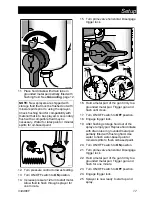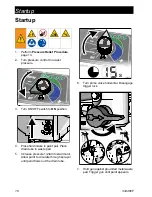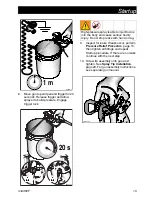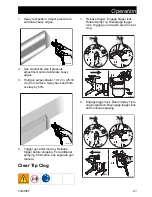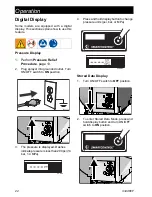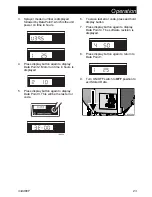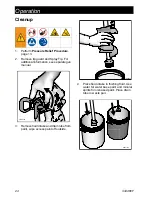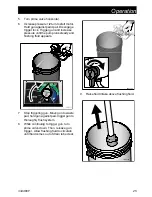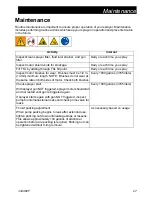
Grounding
12
334466F
Grounding
This sprayer includes a ground wire with an
appropriate ground contact.
The plug must be plugged into an outlet that
is properly installed and grounded in
accordance with all local codes and
ordinances.
Do not modify the plug provided; if it does not
fit the outlet, have the proper outlet installed
by a qualified electrician.
Power Requirements
•
110-120V units require 100-120 VAC,
50/60 Hz, 13A, 1 phase.
•
230V units require 230 VAC, 50/60 HZ,
7A, 1 phase.
Extension Cords
Use an extension cord with an undamaged
ground contact. If an extension cord is
necessary, use a 3-wire, 12 AWG (2.5 mm
2
)
minimum.
NOTE:
Smaller gauge or longer extension
cords may reduce sprayer performance.
Pails
Solvent and oil-based fluids:
follow local
code. Use only conductive metal pails,
placed on a grounded surface such as
concrete.
Do not place pail on a non-conductive surface
such as paper or cardboard which interrupts
grounding continuity.
Always ground a metal pail:
connect a
ground wire to the pail. Clamp one end to the
pail and the other end to a true earth ground
such as a water pipe.
To maintain ground continuity when
sprayer is flushed or pressure is relieved:
hold metal part of spray gun firmly to the side
of a grounded metal pail then trigger the gun.
The equipment must be grounded to
reduce the risk of static sparking and
electric shock. An electric or static spark
can cause fumes to ignite or explode. An
improper ground can cause electric shock.
A good ground provides an escape wire for
the electric current.
ti24584a
ti25497a

















